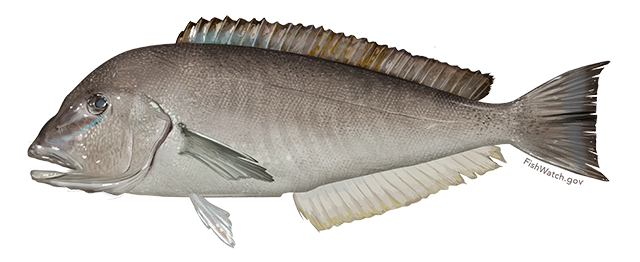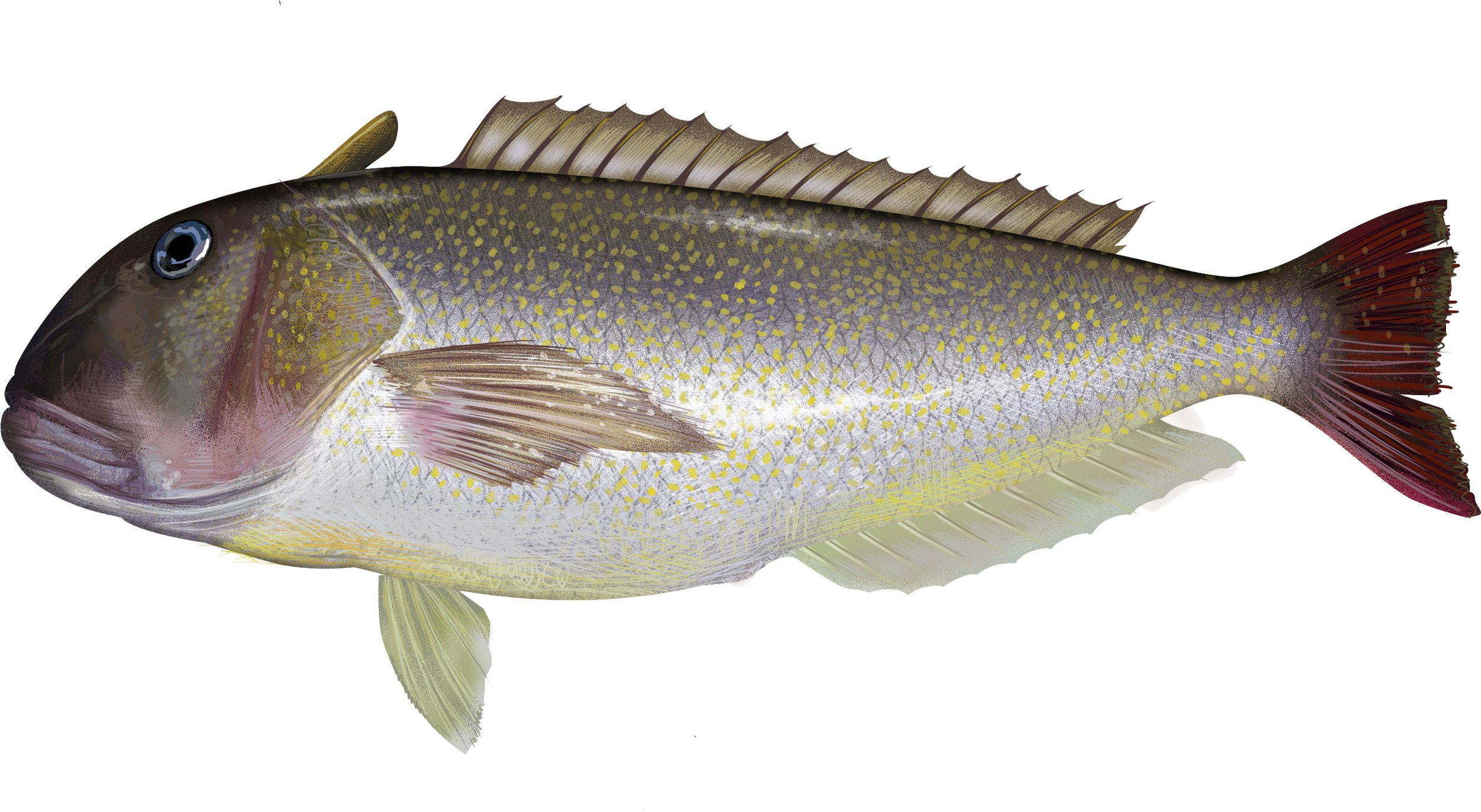Recreational Tilefish Permitting and Reporting
Recreational fishermen fishing for golden and blueline tilefish north of the North Carolina/Virginia border are subject to special permitting and reporting requirements. These requirements are intended to improve the accuracy and reliability of recreational catch and effort estimates. Consistent and accurate reporting by recreational fishermen helps ensure the long-term sustainability of these fisheries.


The Requirements
If you own or operate a private recreational fishing vessel, you must have a private recreational tilefish permit to fish for or possess golden or blueline tilefish in federal waters north of the North Carolina/Virginia border.
You must submit an electronic trip report within 24 hours of returning to port after any trip where you fished for or retained tilefish (even if you didn’t catch or keep any fish).
These rules also apply to for-hire vessels taking private recreational trips.
Retained fish may only be kept for personal consumption and may not be sold or bartered.
Plan Ahead! If you think there’s even a chance you might target tilefish while on a trip for another species, such as tuna or swordfish, you should review this information, apply for a free permit, and select an electronic reporting application.
Step 1: Get a Private Recreational Tilefish Permit
Before you go fishing for tilefish, you will need to apply for a free private recreational tilefish permit. This is a vessel permit, not an individual permit.
Start by registering for an account on GARFO Fish Online at the link below. Once you have created your account and signed in, click “Initial Private Recreational Tilefish Permit” and enter the required information.
Please note that the recreational tilefish permit is an annual permit that begins on May 1 and expires on April 30 of the following year. You will need to reapply for the permit each year. Remember to allow time for your permit to be processed. You will need to print your permit from your GARFO Fish Online account after it is issued. Don’t wait until you are leaving the dock to apply!
Need Help? Visit the Vessel and Dealer Permitting in the Greater Atlantic Region page for additional resources. You can also contact GARFO’s Permit Office at (978) 282-8438 or NMFS.GAR.Permits@noaa.gov. For assistance with your Fish Online account, call (978) 281-9188.
Step 2: Report Your Catch
You are required to submit an electronic vessel trip report (eVTR) within 24 hours of returning from any trip where you fished for tilefish (even if you didn’t catch or keep any fish).
Several eVTR applications are available to choose from. In selecting an application, you should consider what type of device (phone, tablet, laptop/desktop) and what platform (Android, iOS, web browser) you plan to use. Visit the link below to learn more about eVTR Software options.
Note: If you also hold Atlantic HMS permits, you may want to use the SAFIS eTrips mobile or online applications to streamline your reporting process. The SAFIS eTrips platform will satisfy both HMS and tilefish reporting requirements.
Need Help? Visit the Vessel Trip Reporting in the Greater Atlantic Region web page for additional information about electronic reporting. You can also contact the Reporting Help Desk at (978) 281-9188 or nmfs.gar.reporting@noaa.gov.
Why Were These Requirements Put in Place?
We do not currently have good estimates of how many golden and blueline tilefish are being caught by recreational anglers each year. Your data helps improve our understanding and management of these fisheries.
For most fisheries, recreational catch and effort are estimated by NOAA’s Marine Recreational Information Program (MRIP) using a suite of surveys to collect data from anglers. However, because tilefish are caught far offshore and relatively few anglers participate in the fishery, MRIP estimates may not accurately capture recreational catch and effort. To address these concerns, the Mid-Atlantic Fishery Management Council recommended mandatory permitting and reporting for recreational tilefish anglers. These requirements are intended to improve our understanding of recreational tilefish catch and effort and to ensure that the fisheries are being monitored and managed appropriately.
The data that you report have the potential to be used in stock assessments and the setting of regulations, but this can only be achieved with widespread participation from anglers.
Frequently Asked Questions
-
Yes. If the trip was targeting tilefish but you catch no tilefish, you still must complete an eVTR and report 0 for the number of fish caught, released, and retained. Accurate reporting of fishing effort, even when you don’t catch any tilefish, will help fishery scientists and managers have a better understanding of the stock.
-
Your eVTR system will prompt you to enter the data you are required to report. All eVTRs are required to include the vessel name, USCG documentation number (or state registration number, if undocumented), permit number, date/time sailed, date/time landed, trip type, number of anglers, species, gear fished, quantity and size of gear, fishing time, depth, chart area, latitude/longitude where fishing occurred, count of individual golden and blueline tilefish landed or discarded, and Port and state landed. Note that once an electronic application is set up for reporting, the Vessel and Permit information will be automatically entered.
-
If you use your party/charter vessel for non-for-hire fishing trips (for example, taking family or friends out for a day of recreational fishing) during which you target or catch tilefish, you will need to have added a free recreational tilefish permit to your permit portfolio, and you will need to submit your eVTR within 24 hours of entering port following those trips rather than 48 hours as required for your for-hire trips. You can use the same software package for reporting as you are currently using for your for-hire trips.
If you do not use your vessel for any non-for-hire trips during which you target or retain tilefish, then these requirements do not affect you. You can still use your vessel for recreational trips on which you do not target or retain tilefish as you currently do.
As a reminder, party/charter vessel operators are already required to submit reports for all for-hire and non for-hire (recreational) trips. These requirements only impact the permitting and the timing of submitting your reports for the recreational tilefish trips that you take.
-
Recreational tilefish permits are issued to the vessel owner. Each vessel used for fishing for or catching tilefish must be permitted. If you are onboard a vessel issued a valid tilefish permit, you are covered under that vessel’s permit. Each vessel may carry as many individuals as the vessel is rated to carry and all may fish for tilefish under the single vessel permit.
-
All approved eVTR software applications must transfer VTR data through secure methods into the VTR database. Submitting electronically does not change the confidentiality of the VTR information. Individual VTR/eVTR data is confidential and any information submitted, such as fishing latitude/longitude, is not shared publicly.
-
No. There is no cost for the private recreational tilefish vessel permit.
-
According to the Greater Atlantic Regional Fisheries Office, all permits will be issued within 30 days of receipt of your complete application. Please plan accordingly and allow adequate time for your application to be processed.
-
According to NOAA Law Enforcement fishing for or keeping tilefish without a private recreational tilefish permit could result in a civil violation of $500.
Outreach Materials
Documents and Related Pages
NOAA Fisheries: Vessel and Dealer Permitting in the Greater Atlantic Region
NOAA Fisheries: Vessel Trip Reporting in the Greater Atlantic Region
Final Rule: Permitting and Reporting for Private Recreational Tilefish Vessels (7/16/20)
Contacts
For more information or assistance related to eVTRs, please call GARFO eVTR support at (978) 281-9246 or (978) 281-9188. You may also contact your local port agent for assistance.
For other questions related to blueline and golden tilefish management or the Council’s role in requiring eVTRs, please contact the MAFMC staff leads:
Hannah Hart (blueline tilefish), hhart@mafmc.org
José Montañez (golden tilefish), jmontanez@mafmc.org






